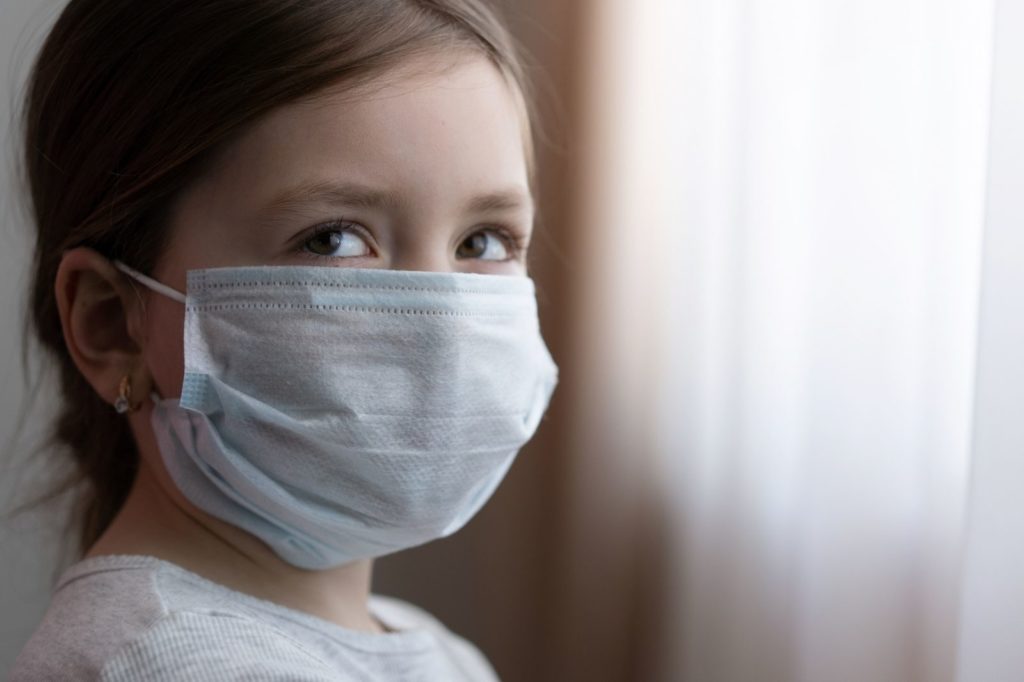COVID-19 is creating a big upheaval in everyone’s lives, especially for children. They may have no more school, daycare, after-school activities, or play dates in the immediate future. Because children thrive when their environments are consistent and predictable, these life changes are stressful for our children. However, our response and how we help them understand what is happening can make a big difference.
It can be hard to know how to talk to your children about complicated situations, especially during uncertain times. Information about COVID-19 is constantly developing, so it can be hard to digest it all yourself, let alone figure out how to help your children understand it! It may even be tempting to avoid talking about it at all because they are “too young to understand.” However, there are helpful and meaningful ways you can talk with your children about almost any difficult subject, including COVID-19.
Be Honest But Developmentally Appropriate
Our little ones trust us to guide them and help them understand the world around them. Of course, we want to protect our children from scary information. Know that being honest doesn’t mean giving your children ALL of the information out there. Instead, it’s about helping them understand and make meaning of what is happening around them.
How much and the way that you present the information will depend on your child’s development and learning style. For example, for very young children, the “less is more” principle works. Stick with very simple consistent messaging, such as, “there’s a bad germ going around, and staying home right now helps everyone stay safe.” For older children, it may be helpful to have a longer conversation about what is happening with an open dialogue where they can ask questions.
You Can Use Tools to Help You
To help provide that “simple message” or as a conversation starter, there are some great tools you can use. For example, here are a few resources that may help:
- A video that teaches how germs are passed.
- For a hands-on, fun approach to understanding how to wash your hands, try using glitter to represent germs. Put glitter on their hands and help your child wash the glitter off by thoroughly scrubbing with soap and water for at least 20 seconds. “Just like glitter, we need to wash and rub our hands for a full 20 seconds to get the germs off.”
- A video that shows another hands-on project illustrating how germs “don’t like” soap.
- Here is a handwashing song to help make handwashing fun.
- An excellent children’s video that does a great job explaining what coronavirus is and responds to the ways many kiddo’s may be feeling and thinking right now.
- A children’s video about the immune system for younger children or for older children.
Provide a Sense of Safety and Control
Children look to us to know how to react to a situation. Even though there is a lot about this situation that we cannot control, there is a lot you can do to keep yourself and your children safe. Communicate to your children that you are doing everything you can to keep them safe and that you will be there to take care of them. It may also be helpful to teach them how their own body helps protect them (see videos about the immune system above)!
Let Them Know it’s OK to Acknowledge Their Feelings
Most of us are feeling a lot of emotions right now — frustrated, sad, anxious, helpless, etc. And these are all natural and healthy emotions to feel in this very stressful situation. It’s important to let our children know that whatever they are feeling, it’s OK.
Help Them Understand How We Can Do Our Part to Make Things Better
Even though your children may feel sad that they can’t see their friends at school, you can help them connect through the phone or the computer. Maybe even send them a package in the mail to brighten their day! Even though it may be frustrating to have to stay at home all day, these types of activities give you and your children ways to feel more comfortable while implementing social distancing and doing your part to help stop the coronavirus from being passed to others.
Finally, let your children know that this isn’t forever. If we all do our part to help protect ourselves and others now, we can help stop the coronavirus quicker. In the meantime, we are all in this together!










